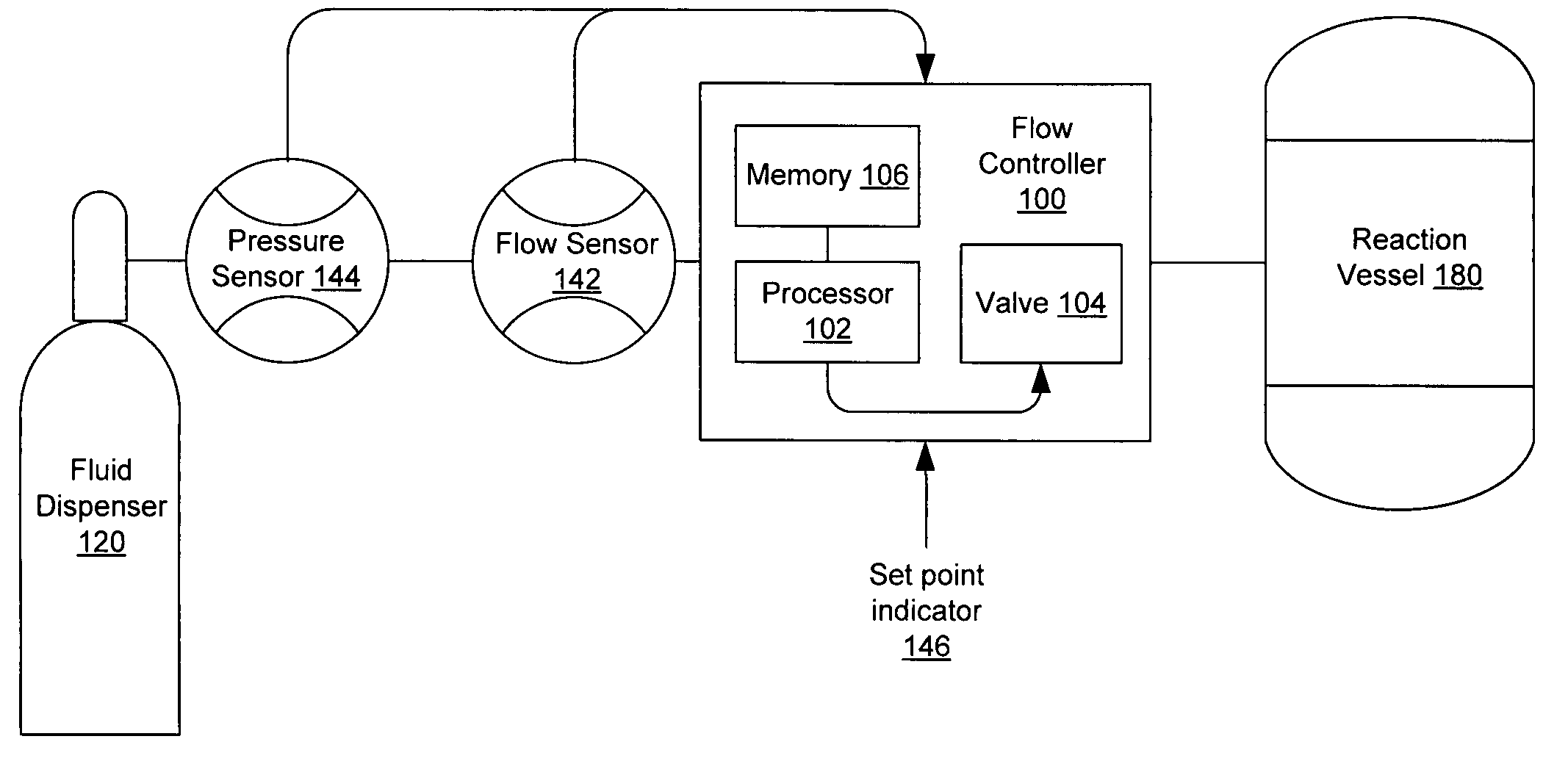Adaptive response time closed loop control algorithm
a closed-loop control and response time technology, applied in adaptive control, process and machine control, instruments, etc., can solve the problems of noisy control signals, noisy flow when fluid flow, and inability to adjust the response time of the closed-loop control algorithm to meet the requirements of a specific application, and achieve the effect of modifying the response time of the closed-loop control algorithm
- Summary
- Abstract
- Description
- Claims
- Application Information
AI Technical Summary
Benefits of technology
Problems solved by technology
Method used
Image
Examples
Embodiment Construction
[0021]In accordance with several embodiments, the present invention is directed to an adaptive closed-loop algorithm (e.g., a proportional-integral-derivative (PID) algorithm) that is implemented on a controller. For example, the controller in some embodiments is a mass flow controller that is configured to deliver a fluid either in a gaseous state (e.g., nitrogen) and / or a liquid state (e.g., hydrochloric acid) to, for example, a tool in a semiconductor facility.
[0022]The closed-loop-control algorithm in several embodiments adapted to changing conditions by modifying a response time of the algorithm. As an example, a mass flow controller operating in accordance with many embodiments of the adaptive algorithm is capable of operating with a fast response when an existing flow rate is substantially below a desired flow rate and capable of operating with a slower response, which is less prone to noise, when the existing flow rate is relatively close to the desired flow rate.
[0023]In ma...
PUM
 Login to View More
Login to View More Abstract
Description
Claims
Application Information
 Login to View More
Login to View More - R&D
- Intellectual Property
- Life Sciences
- Materials
- Tech Scout
- Unparalleled Data Quality
- Higher Quality Content
- 60% Fewer Hallucinations
Browse by: Latest US Patents, China's latest patents, Technical Efficacy Thesaurus, Application Domain, Technology Topic, Popular Technical Reports.
© 2025 PatSnap. All rights reserved.Legal|Privacy policy|Modern Slavery Act Transparency Statement|Sitemap|About US| Contact US: help@patsnap.com



